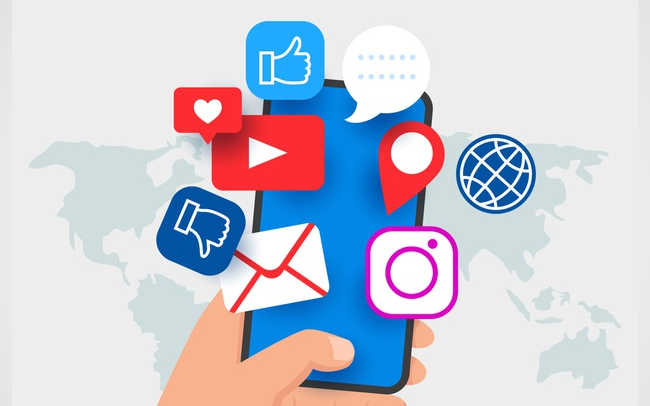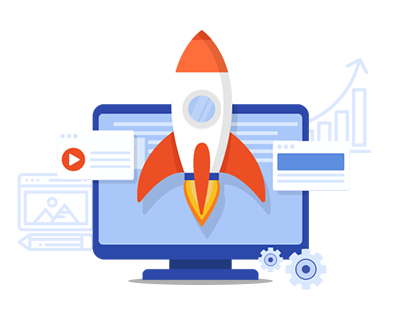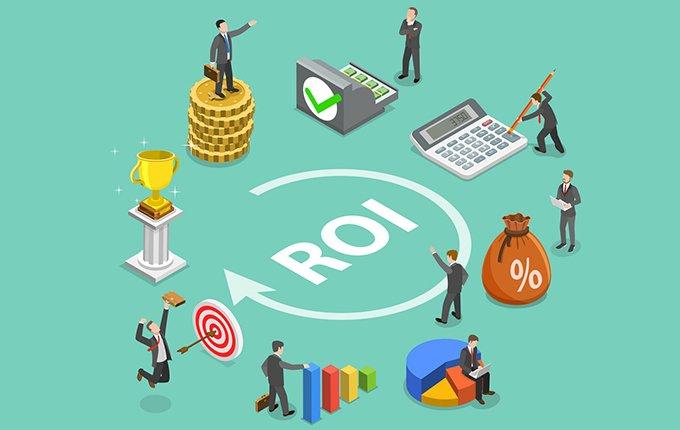Hello!
Technology has revolutionized the way businesses market and advertise their products or services. As technology advances, it’s important for businesses to keep up with these changes in order to stay ahead of the competition and maximize their return on investment (ROI).
In this blog post, we’ll explore how businesses can use technology to improve their marketing ROI and gain an advantage over their competitors. We’ll look at the latest trends in digital marketing, the advantages of using technology in marketing campaigns, and how businesses can use technology to increase their ROI.
Understanding Your Audience
 One of the key factors to improving your marketing ROI is to understand your audience. Without knowing who your customers are, it becomes difficult to create relevant and effective marketing campaigns.
One of the key factors to improving your marketing ROI is to understand your audience. Without knowing who your customers are, it becomes difficult to create relevant and effective marketing campaigns.
Thankfully, with the help of technology, you can gain deep insights into your target audience and understand their needs and preferences. Here are a few ways you can use technology to achieve this:
1. Customer Surveys:
Customer surveys can help you get a clear picture of your customers’ likes, dislikes, and preferences. Use online survey tools such as SurveyMonkey, Typeform, Google Forms, or use a Google Forms alternative to create a survey that targets your specific audience. This can provide valuable insights into what they think of your products or services and what changes or improvements they would like to see.
2. Social Media Monitoring:
Social media provides a great platform to engage with your customers and learn more about them. With the help of social media analytics tools, you can monitor your audience’s behavior and interests, and get a better understanding of their preferences.
Tools like Hootsuite, Sprout Social, or Buffer can help you monitor mentions of your brand and track your social media metrics.
3. Customer Segmentation:
 Another way to improve your understanding of your audience is to segment them based on their behavior, preferences, and demographics. This helps you tailor your marketing campaigns to their specific needs and interests. Tools like Google Analytics, Mixpanel, or Kissmetrics can help you segment your audience and analyze their behavior.
Another way to improve your understanding of your audience is to segment them based on their behavior, preferences, and demographics. This helps you tailor your marketing campaigns to their specific needs and interests. Tools like Google Analytics, Mixpanel, or Kissmetrics can help you segment your audience and analyze their behavior.
For example, understanding your audience is crucial in the education industry, especially when it comes to utilizing teacher email lists. One example of catering to the needs of educators is by providing valuable resources tailored to their specific subject areas and grade levels.
For instance, a company that offers educational software can segment their teacher email lists based on subjects such as math, science, or language arts.
They can then send targeted emails with relevant content, such as lesson plans, interactive activities, and teaching strategies specific to each subject. By understanding the diverse needs and interests of teachers, educational companies can deliver personalized and meaningful content that enhances classroom instruction and fosters professional growth.
4. Utilizing Social Media Analytics
From connecting with friends and family to following our favorite brands and influencers, social media has changed the way we communicate and consume information. But social media is not just about likes, comments, and shares, it is also a valuable source of data that can be used to improve your marketing ROI.
 Social media analytics is the process of tracking, measuring, and analyzing social media data to make informed decisions about your marketing strategy.
Social media analytics is the process of tracking, measuring, and analyzing social media data to make informed decisions about your marketing strategy.
By utilizing social media analytics tools, you can gain insights into your audience’s behavior, preferences, and interests, which can help you tailor your content and messaging to better engage them.
One of the key benefits of social media analytics is that it provides you with a real-time view of how your content is performing.
By monitoring your social media metrics, such as engagement rates, impressions, reach, and follower growth, you can see what is resonating with your audience and adjust your content strategy accordingly.
Additionally, social media analytics tools can help you track the effectiveness of your social media advertising campaigns. By analyzing metrics such as click-through rates, conversion rates, and cost per acquisition, you can optimize your ad targeting and messaging to improve your ROI.
Another way to use social media analytics is to monitor your competitors. By tracking their social media activity and performance, you can gain insights into their strategy and identify opportunities to differentiate yourself and stand out in the crowded social media landscape.
5. Personalization through AI
Personalization has always been a critical aspect of marketing, but thanks to AI, it has never been more accessible. AI algorithms can process vast amounts of data, including customer behaviors, preferences, and interests, to deliver personalized experiences at scale.
 One example of AI-powered personalization is chatbots. Chatbots can use natural language processing to understand a customer’s needs and preferences and provide tailored responses, recommendations, and promotions.
One example of AI-powered personalization is chatbots. Chatbots can use natural language processing to understand a customer’s needs and preferences and provide tailored responses, recommendations, and promotions.
Another example is personalized content recommendations. With the help of AI algorithms, companies can analyze customer data to understand their interests and preferences and then suggest content that is most relevant to them.
Additionally, AI can help companies personalize their marketing messages by analyzing customer data, such as their demographics, purchase history, and online behavior.
Companies can use this information to deliver personalized promotions, product recommendations, and content that resonates with the customer’s needs and interests.
In summary, personalization through AI can improve customer satisfaction and increase engagement, which can ultimately lead to increased revenue and marketing ROI. By leveraging AI, companies can provide a seamless, personalized experience for each customer, driving long-term loyalty and success.
6. Email Marketing Automation
Email marketing is an effective way to communicate with your audience and convert them into customers. However, sending emails manually can be time-consuming and labor-intensive, which is why email marketing automation is becoming more popular.
 For example, you can send a welcome email to new subscribers or a reminder email to those who have abandoned their carts. To get started with email marketing automation, you need to have an email marketing platform that offers automation features.
For example, you can send a welcome email to new subscribers or a reminder email to those who have abandoned their carts. To get started with email marketing automation, you need to have an email marketing platform that offers automation features.
Many platforms such as Mailchimp, Campaign Monitor, and ActiveCampaign offer email marketing automation features.
Once you have chosen your platform, you can start creating email campaigns with automated triggers. For example, you can set up an email sequence that sends a welcome email immediately after someone signs up, followed by a series of follow-up emails to encourage engagement and purchases.
Email marketing automation not only saves you time, but also helps improve your ROI by increasing the chances of conversion. Automated emails are highly personalized and targeted, which makes them more effective in converting leads into customers.
7. SEO Tools and Techniques
SEO, or search engine optimization, is crucial for businesses looking to improve their online visibility and drive more traffic to their websites. By using the right SEO tools and techniques, you can improve your search engine rankings and ultimately, your marketing ROI.
 Here are some SEO tools and techniques to consider:
Here are some SEO tools and techniques to consider:
- Keyword research tools – Use tools like Google Keyword Planner, SEMrush, and Ahrefs to research and identify the right keywords for your business. These tools can also help you understand what your competitors are ranking for and how to outrank them.
- On-page optimization – On-page optimization involves optimizing your website content, including meta tags, headings, and images, to make it more search engine friendly. Tools like Yoast SEO and SEOptimer can help you identify on-page optimization opportunities and suggest improvements.
- Link building – Building high-quality links from other websites to your own is one of the most important factors in SEO. Tools like Moz and Majestic can help you identify high-quality backlink opportunities and monitor your link profile.
- Technical SEO – Technical SEO involves optimizing your website structure and performance to improve search engine crawling and indexing. You can use Google Search Console to identify and fix technical issues on your website. Screaming Frog is a good option as well.
- Local SEO – For businesses with a physical location, local SEO is crucial for attracting local customers. Tools like Google My Business and Moz Local can help you optimize your local listings and improve your local search engine rankings.
By using these SEO tools and techniques, you can improve your online visibility, attract more traffic to your website, and ultimately, improve your marketing ROI.
Integrating CRM Systems
 Integrating Customer Relationship Management (CRM) systems with your marketing strategy can have a significant impact on your ROI. By having a unified system to manage your customer interactions and data, you can streamline your marketing efforts and improve customer engagement.
Integrating Customer Relationship Management (CRM) systems with your marketing strategy can have a significant impact on your ROI. By having a unified system to manage your customer interactions and data, you can streamline your marketing efforts and improve customer engagement.
Integrating your CRM system with your marketing automation tools allows you to automate and personalize your email and social media marketing campaigns based on customer data.
For example, if a customer has previously purchased a certain product, you can send them a personalized email suggesting complementary products.
 In addition to personalized marketing, integrating your CRM system can also improve your lead generation and sales process.
In addition to personalized marketing, integrating your CRM system can also improve your lead generation and sales process.
By tracking and analyzing customer interactions, you can identify potential sales opportunities and prioritize leads for your sales team.
Integrating your CRM system with your website analytics tools can also provide valuable insights into customer behavior, allowing you to optimize your website and improve the user experience.
Overall, integrating CRM systems with your marketing strategy can improve your ROI by increasing customer engagement, optimizing your sales process, and providing valuable data insights. Consider investing in a CRM system and exploring ways to integrate it with your existing marketing tools.
Also read:
- How You can Change your Business Paradigm with Salesforce?
- Things to Consider When Choosing a Product Packaging Company
- Top Product Marketing Tips for your Strategy
Conclusion
Leveraging technology can significantly improve your marketing ROI. By adopting advanced analytics tools, you can gain valuable insights into customer behavior, preferences, and trends, allowing you to target your marketing efforts more effectively.
Automation and artificial intelligence-powered tools can streamline processes, reduce manual labor, and enhance personalization, resulting in increased efficiency and cost savings.
Additionally, employing data-driven strategies, such as leveraging customer segmentation and predictive modeling, can help you identify high-value prospects and optimize your marketing campaigns for better results.
Embracing technology-driven marketing solutions empowers businesses to make data-backed decisions, enhance customer experiences, and ultimately achieve higher returns on their marketing investments.
Thank you!
Join us on social media!
See you!






